Microsoft's new Surface Pro with optional LTE gets official
Microsoft today announced the all-new Surface Pro for 2017. Here is what's new, and why the new device is very much the sum of all of its parts.
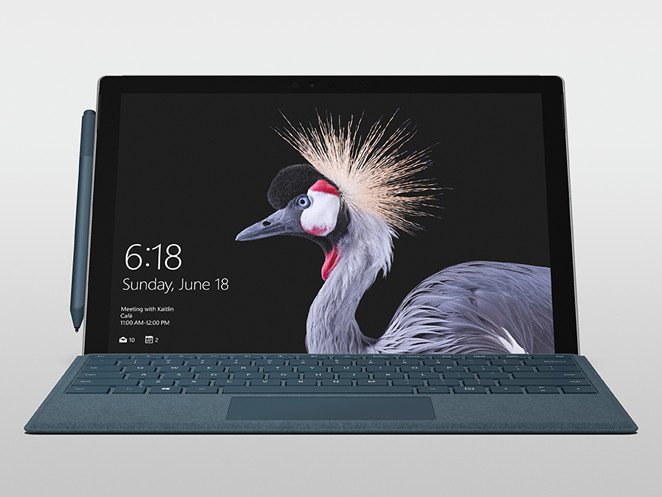
Microsoft announced the brand-new Surface Pro, the fifth iteration of its Surface tablet series, today in Shanghai, China. The device is due to launch globally on June 15, and Microsoft is shunning its previous numbering system for the Surface Pro name this time and will not use "5," as anticipated. In other words, the "Surface Pro 5" is simply called Surface Pro.
On the outside, the new Surface Pro looks very much like the Surface Pro 4. But looks can be deceiving. With more than 800 new customized parts, a redesigned thermal system, an improved Surface Pen, and optional 4G LTE, the "most versatile laptop" is a testament to Microsoft's need for perfection.
What's changed with the new Surface Pro?
Here are the main changes and new features with Surface Pro for 2017. Many improvements come in the form of hardware changes and refinements, but there are some minor stylistic changes as well. Here's a list of modifications:
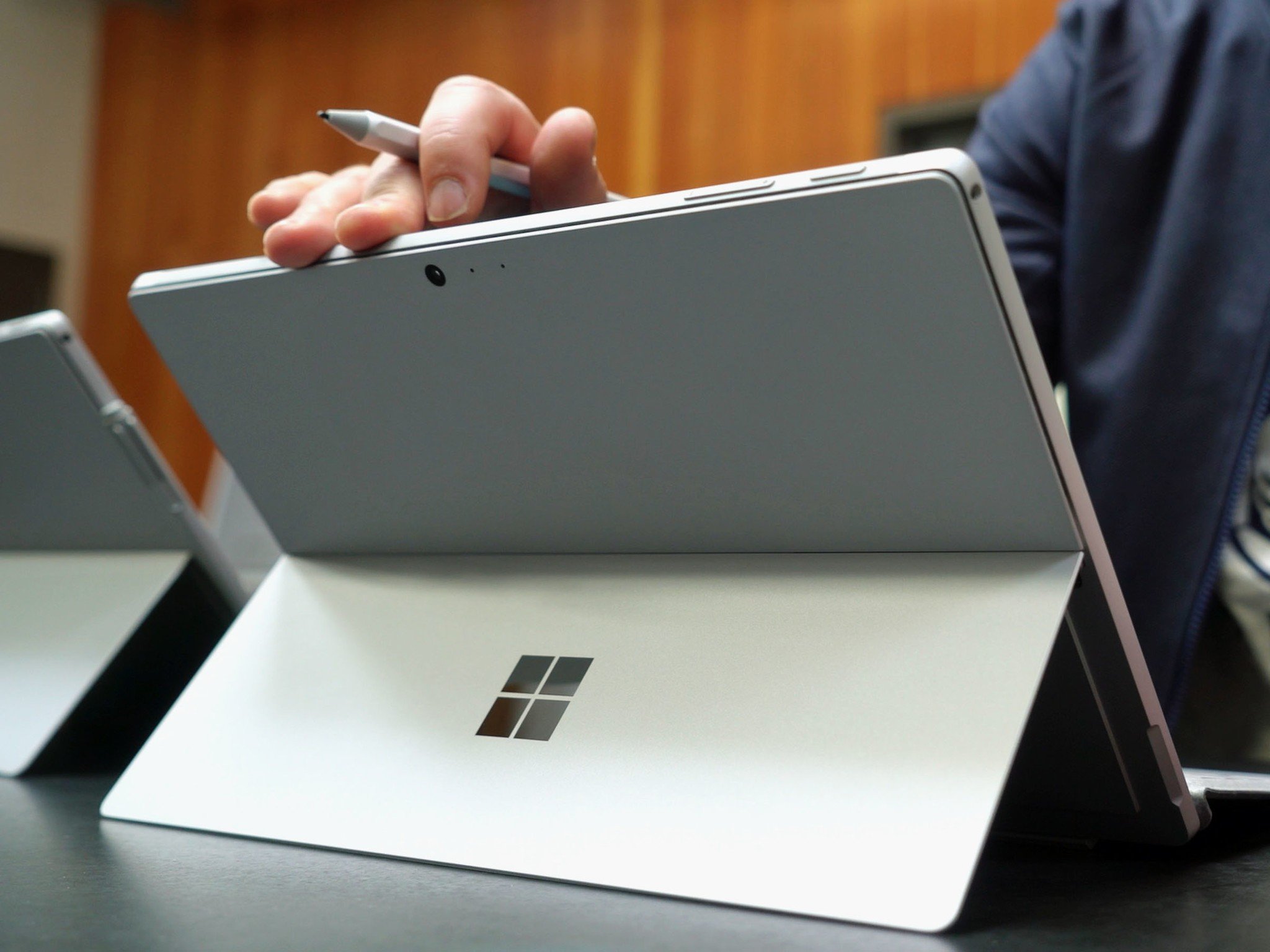
- Intel Core i5 version is now completely fanless.
- 50 percent improved battery life with an estimated 13.5 hours of usage.
- Restructured chassis with smoother, rounded edges.
- Thinner radial vents and new "whisper quiet" thermal system.
- Optional 4G LTE with nano SIM and eSIM support; no visible antenna lines.
- Redesigned kickstand opens to 165 degrees.
- New Surface Pen with 4,096 levels of pressure and just 21 milliseconds of latency.
- Front-facing camera is now "blacked out" to fade into bezel.
- Brand-new Alcantara Type Cover in platinum, burgundy and cobalt blue.
- Intel Iris Plus Graphics 640 for Core i7 model.
- Support for on-screen Surface Dial usage.
While many of those advances may seem incremental, when you add them all together they make for an impressive refresh. It is clear Microsoft is not messing with a winning formula. Ever since the Surface Pro 3, the company figured out what the ultimate 2-in-1 PC should look like. Surface Pro 4 improved upon it further and now the fifth-generation Surface Pro takes the design to the next level.
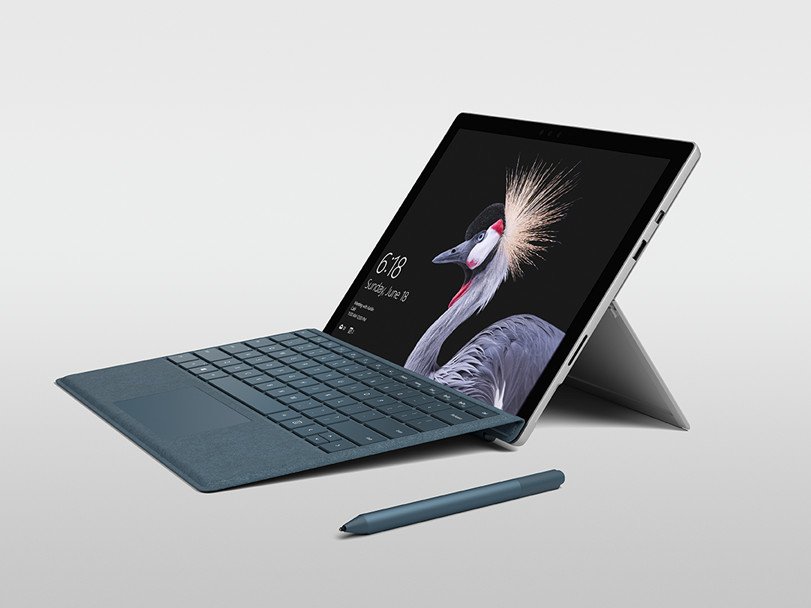
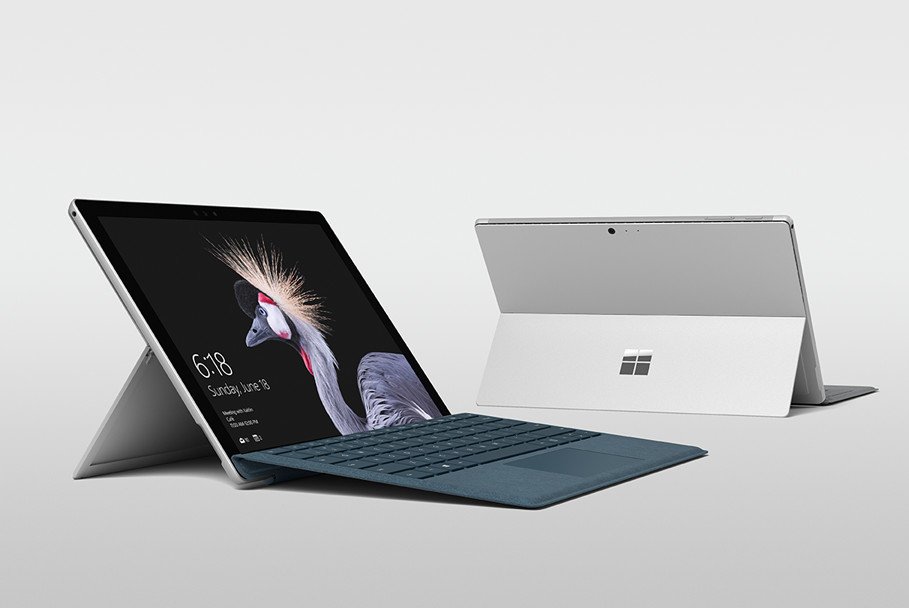
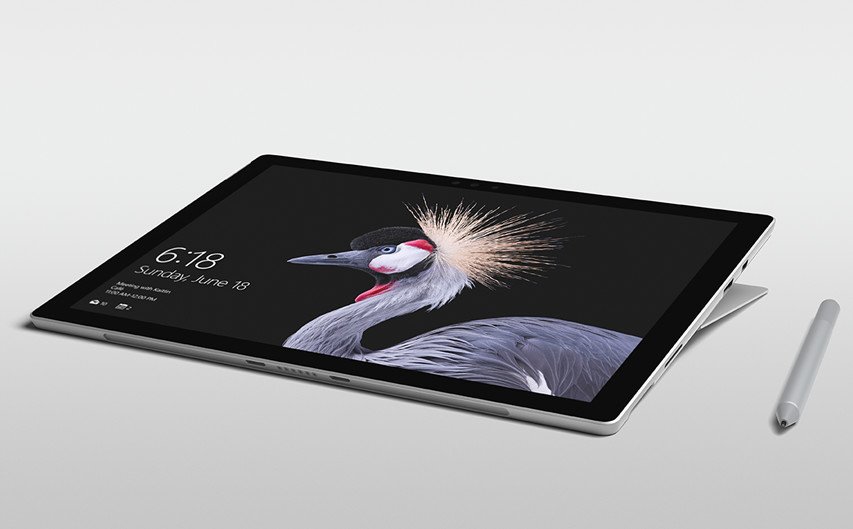

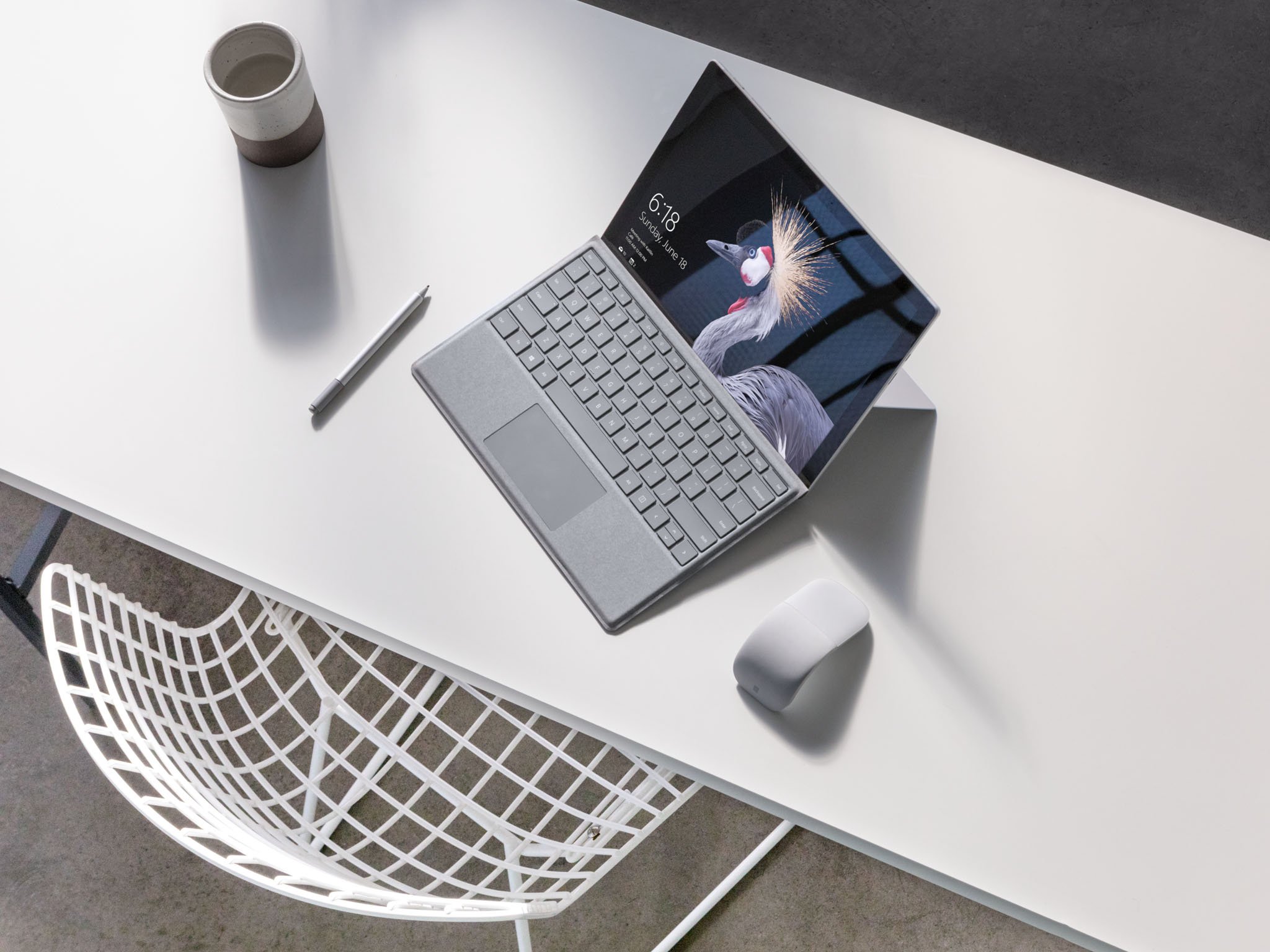
Surface Pro (fifth gen) technical specifications
| Category | Specification |
|---|---|
| Display | 12.3-inch Pixel Sense display10 point multi-touch |
| Display Resolution | 2736 x 1824 (267 PPI)Aspect Ratio: 3:2 |
| Software | Windows 10 |
| Processor | Seventh Gen Intel Core m3 7Y30Seventh Gen Intel Core i5-7300USeventh Gen Intel Core i7-7660U |
| Storage | 128GB, 256GB, 512GB, or 1TB Solid State Drive (SSD) |
| Memory | 4GB, 8GB or 16GB RAM1866Mhz LPDDR3 |
| Graphics | Core m3 and Core i5: Intel HD graphics 620Core i7: Intel Iris Plus Graphics 640 |
| Rear Camera | 8.0MP autofocus camera with 1080p HD video |
| Front Camera | 5.0MP camera with 1080p HD videoWindows Hello face-authentication |
| Speakers | Stereo speakers with Dolby Audio Premium |
| Ports | One full-size USB 3.0Mini DisplayPortHeadset jackSurface ConnectmicroSDXC card reader |
| Sensors | Ambient light sensorAccelerometerGyroscope |
| Network | Wi-Fi: IEEE 802.11 a/b/g/n/ac compatibleBluetooth Wireless 4.1 technology |
| Security | TPM chip for enterprise security |
| Battery Life | 13.5 hours of use |
| Pen | Surface Pen |
| Weight | 1.69 lbs to 1.73 lbs (768 g to 784 g) |
| Dimensions | 11.50 inches x 7.9 inches x 0.33 inches (292 mm x 201 mm x 8.5 mm) |
Optional 4G LTE for the first time
Due later this year, an option for 4G LTE will be available for the first time in the Surface Pro series. There are no physical differences between the LTE and non-LTE variants, and there are no antenna lines or thicker display bezels where modem components typically reside.
The same can be said for the battery and 4G radio. The system takes a traditional nano SIM card, but the new Surface Pro will also support upcoming electronic SIMs (eSIM), as well.
Refined design for 2017
The corners of the Surface Pro are now less angular, with softer edges. It's a subtle change, but those rounded corners make holding the device supremely enjoyable.
All the latest news, reviews, and guides for Windows and Xbox diehards.
The radial vent for heat dissipation is also reduced compared to the previous generation, which is more impressive for the Core i5 version. That model is now completely fanless, joining the lower Core M3 variant. The Core i7, though, still maintains a fan because Microsoft wants you to push that processor as hard as you can.

The Surface kickstand is improved, as well. You can now push it nearly all the way back so that Surface Pro can be used at a 165-degree angle. The Surface Dial also works directly on the display, too, due to popular request.
The Surface Pen with new inking co-processor
Nothing is more essential to the Surface Pro than its pen, and there too Microsoft made advances. With 4,096 levels of pressure, the new Surface Pen doubles the previous generation's sensitivity, which was at 1,024 levels.

Latency also drops from 45 milliseconds to just 21 milliseconds, thanks to an all new co-processor that connects the Surface Pro's GPU to the digitizer. Digital ink feels like it pours out from the Surface Pen with almost no discernable delay. It's an astonishing accomplishment, and for the first time, it genuinely blurs the analog and digital inking worlds.
For those who complained that the Surface Pen didn't have good tilt and rotation support, Microsoft solved that, too. Even the magnets feel stronger when you attach the pen to the side.
These advancements were accomplished without major effects on Pen battery life, which is still estimated at one year.
Instant-on and double the battery life
Another advancement with the new Surface Pro is power management. Part of that is due to the new seventh Generation Intel "Kaby Lake" processors, but a lot of it is also tied to Windows 10 itself.
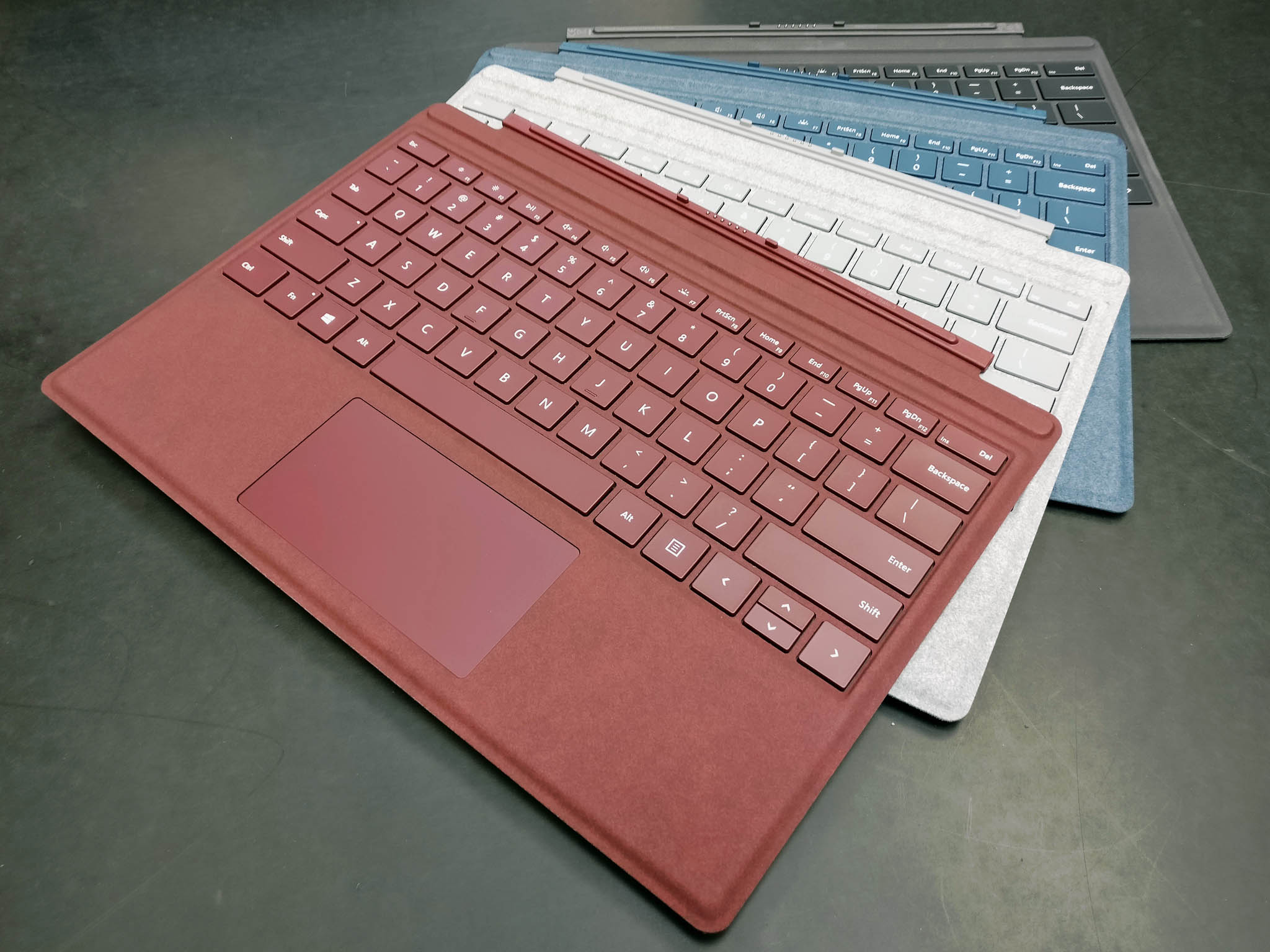
Hitting the power button results in the Surface Pro coming to life just like a true tablet. Microsoft claims that this ability makes the Surface Pro truly a tablet-killer, because the experience is now on par with competitor offerings and experiences.
For battery life, Microsoft claims 13.5 hours, doubling the Surface Pro 4 battery, while also being 2.5 times more powerful than that version.
Still the same I/O ports and no Type-C
One area of potential controversy is the similar port offerings for the new Surface Pro. The latest version forgoes a modern USB Type-C port and instead relies on USB Type-A, mini Display, microSD card, and the SurfaceConnect power port.
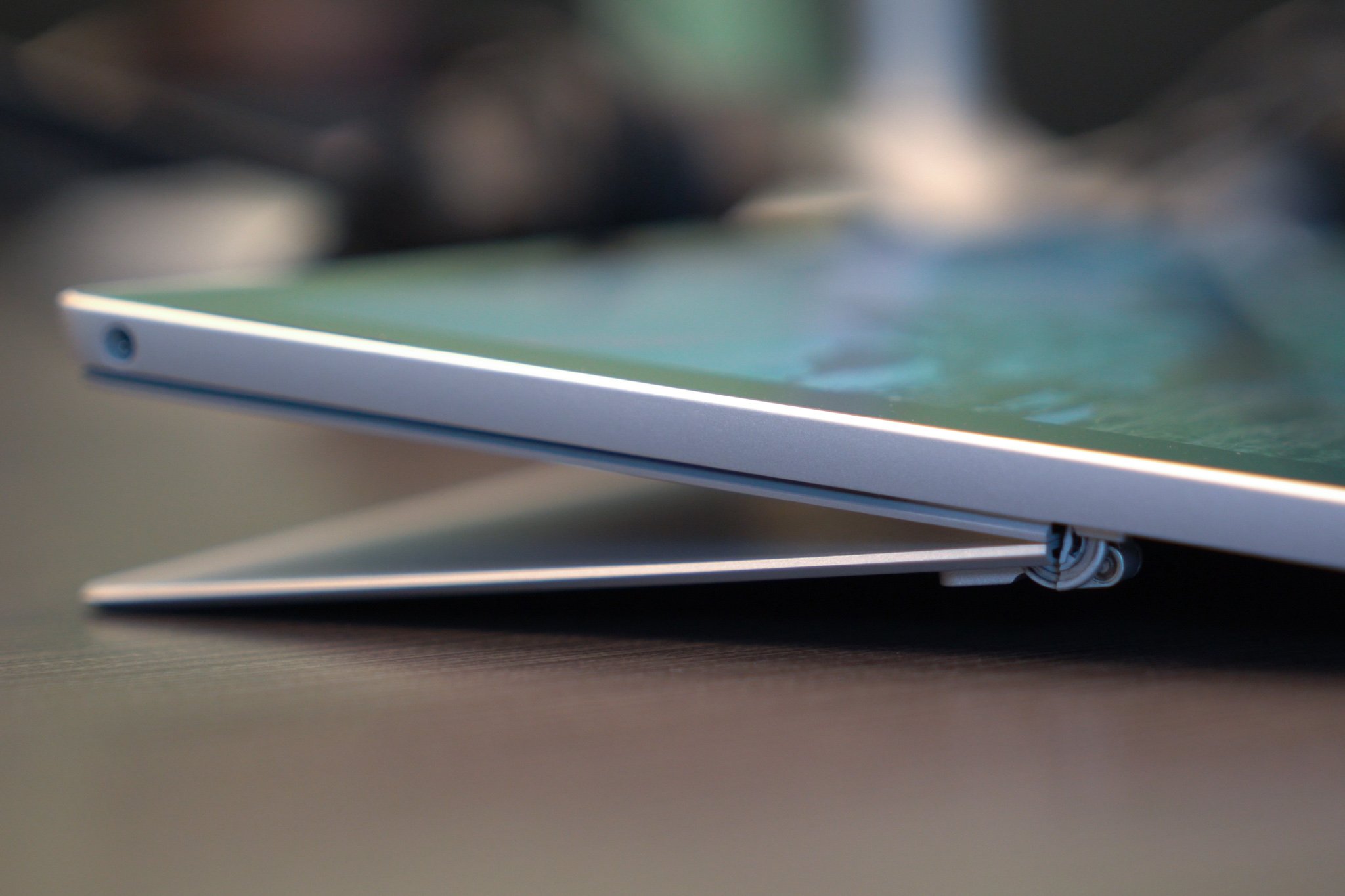
That's not to say Microsoft did not prototype USB Type-C – it did – but legacy support for the Surface Dock and market confusion over USB Type-C led the company to stick with the current Type-A version only, Microsoft says.
Price and availability
In another first, Microsoft will launch the new Surface Pro and new Type Cover globally on June 15 in the following countries:
- Australia.
- Austria.
- Belgium.
- Canada.
- China.
- Denmark.
- Finland.
- France.
- Germany.
- Hong Kong.
- Ireland.
- Italy.
- Japan.
- Korea.
- Luxembourg.
- Netherland.
- New Zealand.
- Norway.
- Poland.
- Portugal.
- Spain.
- Sweden.
- Switzerland.
- Taiwan.
- U.K.
- US.
Preorders begin today, and the new Surface Pen – compatible with older Surfaces – should be available in the coming weeks.
Pricing starts at $799 for the new Surface Pro.
Preorder the Surface Pro on the Windows Store
Related Surface Pro stories

Daniel Rubino is the Editor-in-chief of Windows Central. He is also the head reviewer, podcast co-host, and analyst. He has been covering Microsoft since 2007 when this site was called WMExperts (and later Windows Phone Central). His interests include Windows, laptops, next-gen computing, and wearable tech. He has reviewed laptops for over 10 years and is particularly fond of 2-in-1 convertibles, Arm64 processors, new form factors, and thin-and-light PCs. Before all this tech stuff, he worked on a Ph.D. in linguistics, performed polysomnographs in NYC, and was a motion-picture operator for 17 years.
